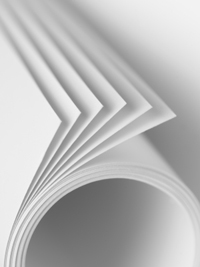Many metrics in the printing industry can cause great confusion for anyone who does not fully understand them, paper weights are no different.
If you were asked to guess which sheet of paper is heavier, thicker, and more durable, a 24lb sheet or a 20lb sheet, you would undoubtedly pick the 24lb sheet and you would be 100% correct. Now let’s say you were asked to answer the same question about a 70lb sheet and a 28lb sheet. If you picked the 70lb sheet you would be incorrect!
This was actually a trick question because both sheets are exactly the same weight and thickness. The reason for this seemingly bizarre result has to do with the difference in how these sheets started out, long before they reach the end users.
The 28lb paper, no matter what size it is now, started out as a 17in x 22in Sheet. If you weight 500 such sheets the result is 28lbs. On the other hand the 70lb paper started out in 25in x 38in sheets and, as you probably guessed, 500 of those sheets weight 70lbs.
As you can see it has everything to do with the size of the starting sheet. You might be saying to yourself that’s great, but how will I know which is which? The best way is to use the chart that we have provided for you below!
"Text" is a term that indicates the paper started as 25x38 sheets.
"Bond" is a term that indicates the paper started as 17x22 sheets.
| Bond (lbs) | Text (lbs) | Thickness (inches) |
|---|---|---|
| 20lb | 50lb | 0.0038 |
| 24lb | 60lb | 0.0048 | 28lb | 70lb | 0.0058 |
| 32lb | 80lb | 0.0062 |
| 40lb | 100lb | 0.0073 |
Paoli Envelope uses Bond Weights - Having multiple different weights (24lb/60lb and 28lb/70lb etc) for a product, which in the eyes of the end user, is exactly the same can only lead to confusion. That is why we have decided to label all our product weights using the "Bond" weight convention.

